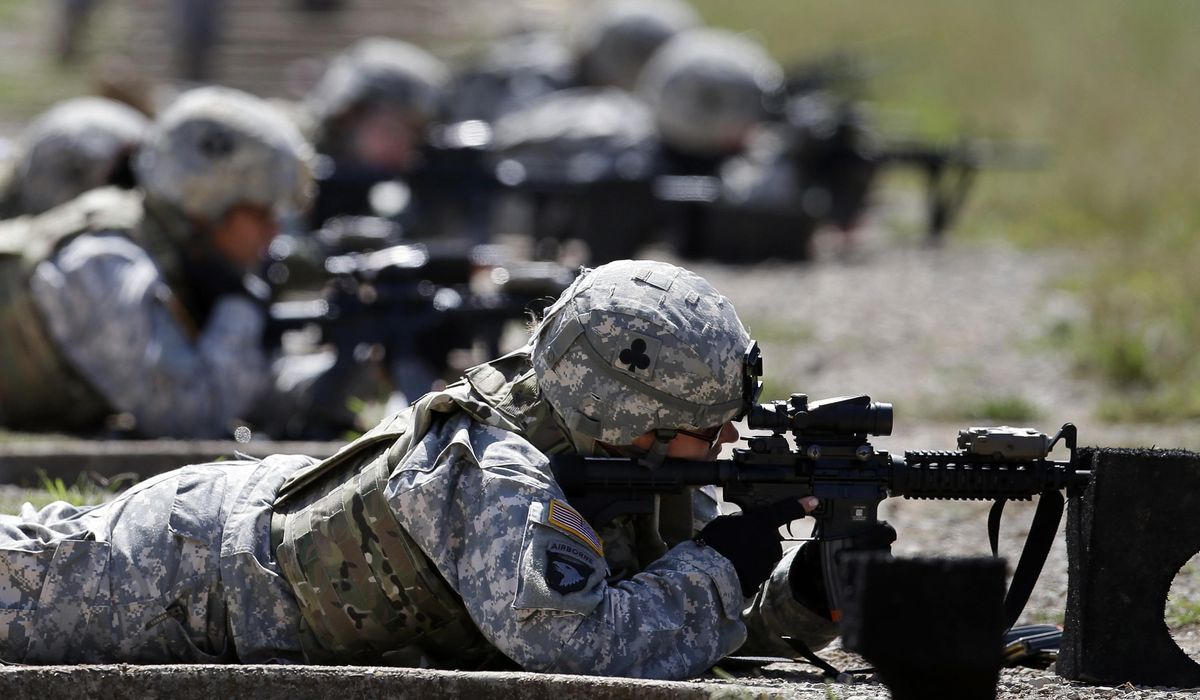

Senate Democrats are quickly advancing legislation that would expand the military draft to include women.
The Senate Armed Services Committee approved an amendment last week as part of this year’s National Defense Authorization Act (NDAA), which would amend the Military Selective Service Act to require women to register for Selective Service.
The amendments have already received pushback from two Republican committee members. Sens. Tom Cotton of Arkansas and Josh Hawley of Missouri both spoke out against the measure following the committee’s summary of the closed-door hearing was released on Thursday.
“American women have heroically served in and alongside our fighting forces since our nation’s founding,” Mr. Hawley said on Twitter Friday. “It’s one thing to allow American women to choose this service, but it’s quite another to force it upon our daughters, sisters and wives.”
Mr. Cotton said he would work to remove the measure before the bill passes on the Senate floor.
Similar measures to expand the draft were included in both the House and Senate Armed Service Committees’ versions of the NDAA in 2016, but the measures ultimately failed to be signed into law. Instead, Congress created the National Commission on Military, National, and Public Service, which concluded in March of last year that “the time is right” to include 18 to 26-year-old women in Selective Service registration as a “necessary and fair step.”
But opponents argue that the commission, which focused broadly on compelling national service beyond military service alone, failed to consider the impact the inclusion of women in the draft could have on readiness during a national emergency.
“Women have always served in the military,” said Elaine Donnelly, president of the Center for Military Readiness and former adviser to President George H.W. Bush. “They’ve always stepped up to volunteer. Whether it’s a civilian emergency or a military emergency, there’s no reason to believe women would not do the same.”
But Mrs. Donnelly said the specific purpose of the draft is to replace combat casualties sustained by those serving in combat arms roles such as infantry and special operations, rather than support roles which, until 2015, were the only roles open to women.
According to the Center for a New American Security, close to five years after lifting the ban on women in combat roles, 653 women served in combat roles in the Army. Over the same period, 1,055 women had assessed into the Army’s training pipeline for combat roles, but faced an attrition rate of up to 72%, depending on the specialization.
Still, there have been well-documented success stories, with several women completing the notoriously grueling training for elite special operations billets. Two female Army officers completed Ranger school in 2015 alone and by March of 2020, 44 women had graduated the course. In 2019, two female soldiers passed selection to serve in the Army’s 75th Ranger Regiment, and in 2020 a National Guard soldier became the first female to complete the Army’s selection to become a Green Beret.
Last month, the first female sailor completed the Naval Special Warfare combatant-craft crewman training course, to become a member of the Navy’s elite Special Boat Teams. The training is considered among the Navy’s most grueling, with an attrition rate of approximately 65%.
But Mrs. Donnelly said that these success stories do not necessarily translate to a large-scale mobilization of women in a national emergency. She said the commission failed to account for physical differences that exist between men and women that will make combat units less effective if ignored.
“I think the commission really did not meet its expectations,” she said. “I think women in this country deserve better than that. The military deserves better than that. Certainly, combat arms units need to be treated more seriously than a social experiment, a social experiment that we already know is not going to work.”
Ms. Donelly cited key findings from a three-year study completed by the Marine Corps which noted several “gender-related physical deficiencies” that would negatively impact co-ed combat units in testimony to the Senate Armed Services Committee in March.
Mrs. Donnelly also cited 2018 changes to the Army Combat Fitness Test aimed at making the test “gender-neutral,” that resulted in an 84% failure rate among female soldiers compared to a 30% failure rate among male soldiers during the initial fielding of the test.
“This is a denial of reality that is not going to work,” Ms. Donnelly said of the committee’s decision to include women in the draft. “So if you have these theories, and you ignore reality, what you’re going to create is a problem. Because if this policy goes through, contrary to what the national commission said, we’re going to find that combat arms units would be less strong, less fast, more vulnerable to debilitating injuries, less ready for deployment on short notice, less accurate with offensive weapons during combat operations. None of these things are justifiable. So no, the time is not right for this, at this time or any time for that matter.”
The Supreme Court last month declined to rule and deferred to Congress on a challenge to the men-only draft brought by the National Coalition for Men, which argued the draft, in its current form, is discriminatory and unconstitutional.
Multiple justices expressed hope that Congress would include a measure to expand the draft in this year’s defense bill and cited a March Senate Armed Services Committee hearing on the matter but ultimately deferred the legislative branch on matters of national defense.
The House Armed Services begins subcommittee markups to the NDAA Wednesday.
